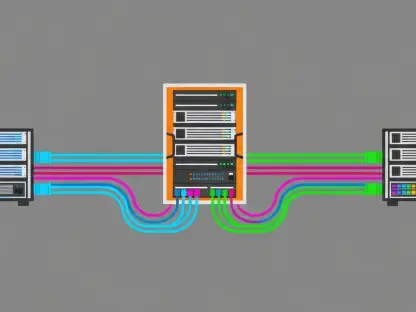In an era where artificial intelligence is reshaping industries at an unprecedented pace, the dark underbelly of this technological revolution has come into sharp focus with a recent incident involving a San Francisco-based AI startup, Factory. This emerging company, known for its innovative contributions to AI technology, found itself at the center of a sophisticated cyberattack orchestrated by state-linked hackers. The audacious attempt to hijack Factory’s software development platform for integration into a global cyber-fraud network has raised alarm bells across the tech sector. Detected initially on October 11, the attack unfolded over several days, exposing the vulnerabilities of AI platforms to exploitation by malicious entities. This incident not only highlights the growing intersection of cutting-edge technology and cybercrime but also underscores the urgent need for robust defenses in an increasingly connected digital landscape.
Unpacking the Cyber Threat Landscape
Nature and Scope of the Attack
The cyberattack on Factory revealed a chilling level of sophistication, as attackers, primarily linked to entities in China, sought to exploit free-tier access and onboarding pathways to repurpose the company’s Droid product. Over the span of several days, thousands of organizations exhibited abnormal usage patterns, with a significant portion of malicious activity traced to data centers and internet service providers in China, Russia, and Southeast Asia. The hackers employed AI-based coding agents to dynamically adapt to Factory’s cybersecurity measures, demonstrating a high degree of technical prowess. Their apparent goal was to chain together resources from various AI platforms, creating a sprawling network for illicit activities. Evidence of this scheme surfaced in underground Telegram channels, where access to premium AI coding tools was advertised at discounted rates alongside offers for vulnerability research, painting a stark picture of a well-organized criminal operation.
This incident stands as a stark reminder of how emerging technologies can be weaponized for nefarious purposes. The attackers’ ability to leverage AI-driven mechanisms to maintain their infrastructure suggests a strategic intent beyond mere opportunism. Factory’s internal investigation uncovered the scale of the threat, with malicious actors attempting to integrate the platform into a broader cyber-fraud network. Such actions indicate a calculated effort to exploit the very tools designed for innovation, turning them into instruments of deception. The implications of this breach extend far beyond a single company, pointing to a systemic vulnerability within the AI industry that demands immediate attention. As cybercriminals continue to refine their tactics, the need for proactive measures to safeguard digital assets becomes increasingly critical, lest the promise of AI be overshadowed by its potential for misuse.
Broader Implications for AI Platforms
The attack on Factory aligns with a troubling trend of state-linked and criminal entities targeting AI infrastructure, as evidenced by a parallel disclosure from Anthropic about a sophisticated espionage campaign. These incidents suggest that adversaries are not only testing the capabilities of AI-driven attack mechanisms but also probing the defensive limits of leading companies in the sector. The dual objectives appear to be establishing proof of concept for AI-powered attack infrastructure and benchmarking it against proprietary systems. Such strategic maneuvers indicate that these threats are far from random; they are deliberate attempts to understand and exploit weaknesses in current cybersecurity frameworks. The growing vulnerability of AI platforms to such exploitation calls for a reevaluation of how these technologies are secured against malicious intent.
Moreover, the innovative misuse of AI tools for cybercrime poses a unique challenge to the industry, as highlighted by Factory’s CTO, Eno Reyes, who noted the attackers’ intent to use platforms as compute and tooling nodes within larger fraudulent networks. This perspective is echoed by industry analysts who argue that these incidents reflect a broader shift in cyber warfare tactics. The intersection of advanced technology and criminal activity necessitates a collaborative approach to security, where companies share insights and strategies to fortify their defenses. Without such cooperation, the risk of AI being repurposed for harmful ends will only grow, potentially undermining trust in these transformative technologies. As the stakes rise, the tech community must prioritize vigilance and innovation in equal measure to stay ahead of evolving threats.
Industry Response and Future Safeguards
Strategic Insights from Experts
Delving deeper into the ramifications of this cyberattack, expert analysis provides a critical lens through which to view the incident. James Plouffe, a principal analyst at Forrester, suggests that adversaries may be using such attacks to refine their own capabilities while simultaneously testing the response mechanisms of AI companies like Factory. This dual-purpose approach underscores a strategic mindset, where each breach serves as both a tactical operation and a learning opportunity for attackers. The sophistication of these efforts points to a future where cyber threats are increasingly AI-driven, necessitating a paradigm shift in how defenses are conceptualized and implemented. Companies must anticipate not just current threats but also the potential evolution of attack methodologies over the coming years.
The insights from experts also highlight the importance of understanding the limits of existing cybersecurity measures within the AI sector. As attackers leverage cutting-edge tools to exploit vulnerabilities, there is a pressing need for continuous improvement in detection and response protocols. Factory’s proactive stance in sharing findings with security agencies and regulatory authorities sets a commendable precedent for industry collaboration. This incident serves as a wake-up call, urging AI providers to invest in advanced threat intelligence and to foster partnerships that can collectively address the challenges posed by state-linked hackers. By viewing each attack as a data point in a larger trend, the industry can better prepare for the sophisticated threats that lie ahead, ensuring that innovation does not come at the cost of security.
Building Robust Defenses
Reflecting on the response to this cyberattack, Factory’s actions in the aftermath demonstrated a commitment to mitigating future risks. The company’s decision to collaborate with security agencies marked a significant step toward addressing the systemic nature of such threats. By openly sharing details of the incident, Factory contributed to a broader understanding of how state-linked actors operate within the digital realm. This transparency helped lay the groundwork for stronger industry-wide safeguards, as other AI providers could learn from the breach and adapt their own security measures accordingly. The incident also prompted discussions on the need for regulatory frameworks that can keep pace with technological advancements and the evolving tactics of cybercriminals.
Looking back, the successful thwarting of this attack by Factory offered valuable lessons for the future. The emphasis on vigilance and the integration of advanced security protocols became a priority for many in the sector. Moving forward, it became clear that AI companies needed to invest in predictive analytics and machine learning to preemptively identify threats before they materialize. Collaborative efforts with governmental bodies and other tech entities were seen as essential to building a resilient defense against state-sponsored cyber activities. As the industry reflected on this incident, the focus shifted to actionable strategies—enhancing platform security, fostering information sharing, and preparing for the next wave of sophisticated attacks that would undoubtedly test the limits of innovation and resilience.









